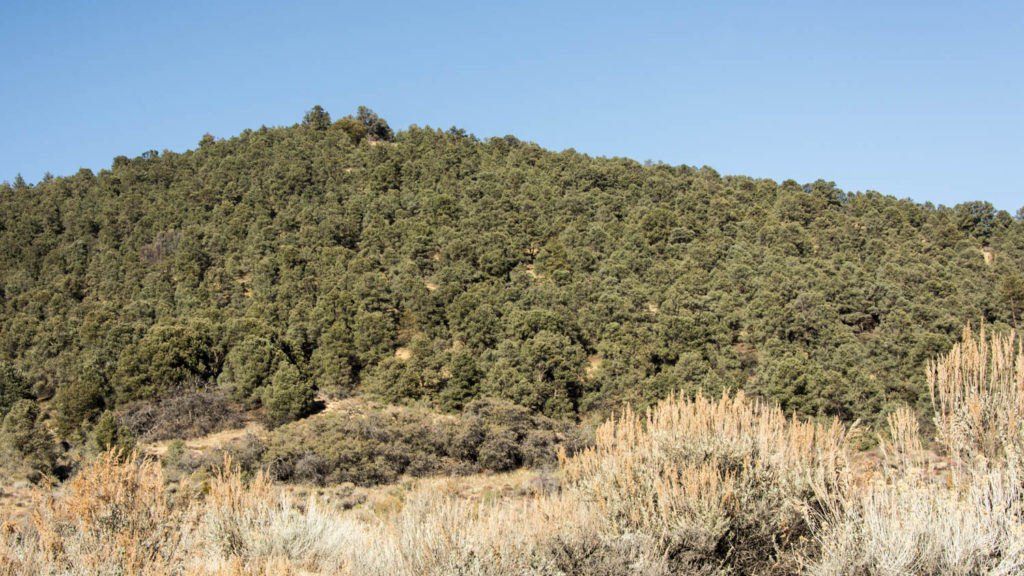Pinus monophylla
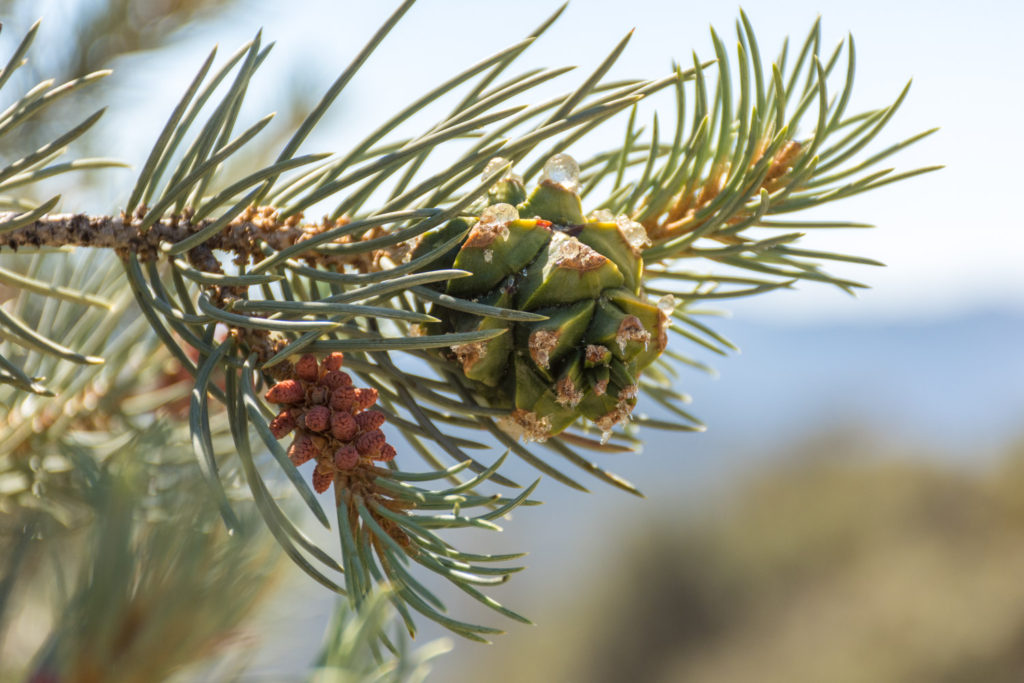
Of all the 110 species of pine around the world, only one has needles (leaves) attached individually to its stems: the aptly-named singleleaf pinyon pine. Every other species has needles occurring in bundles of two, three, or five. This unique pine also happens to have some of the largest and tastiest pine nuts in the world.
Description
Throughout most of its range, the singleleaf pinyon pine is a fairly short pine, generally growing less than 50′ tall. On drier sites such as the Great Basin or along the edge of the Mojave Desert, pinyon pines may only be around 20′ tall or less. The tree is very slow growing, adding only 2 – 4″ to its height each year. In contrast, Jeffrey pines can grow 24 – 36″ each year.
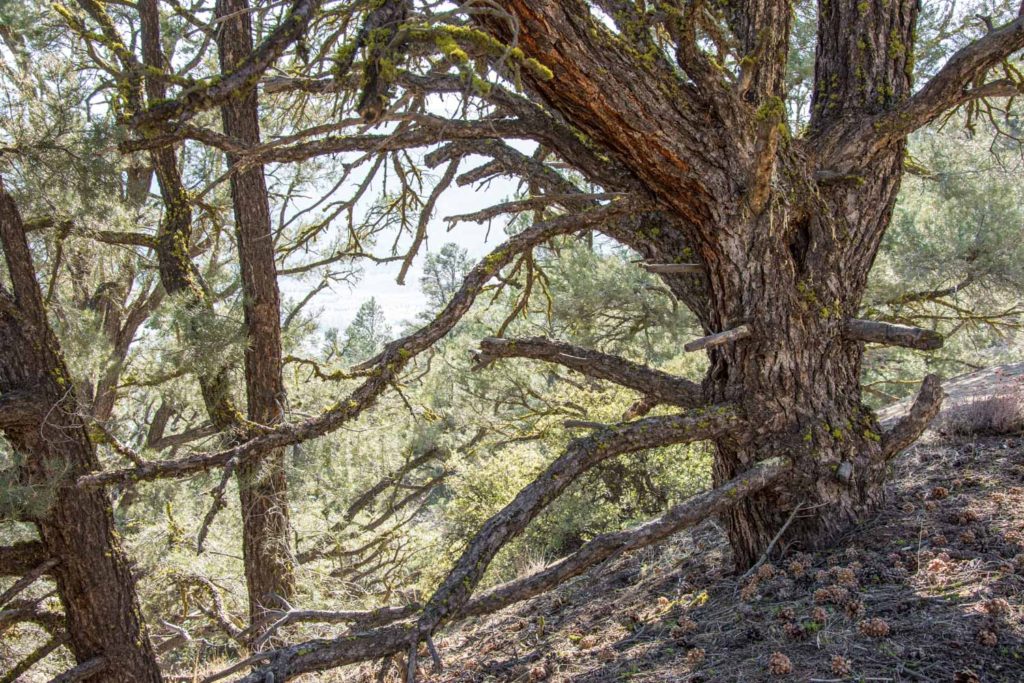
When young, pinyon pines are quite pyramidal in shape. As they grow older and larger, they begin to branch out more and take on a broad-crowned appearance. If you get up close to a singleleaf pinyon pine, you will almost certainly notice two things:
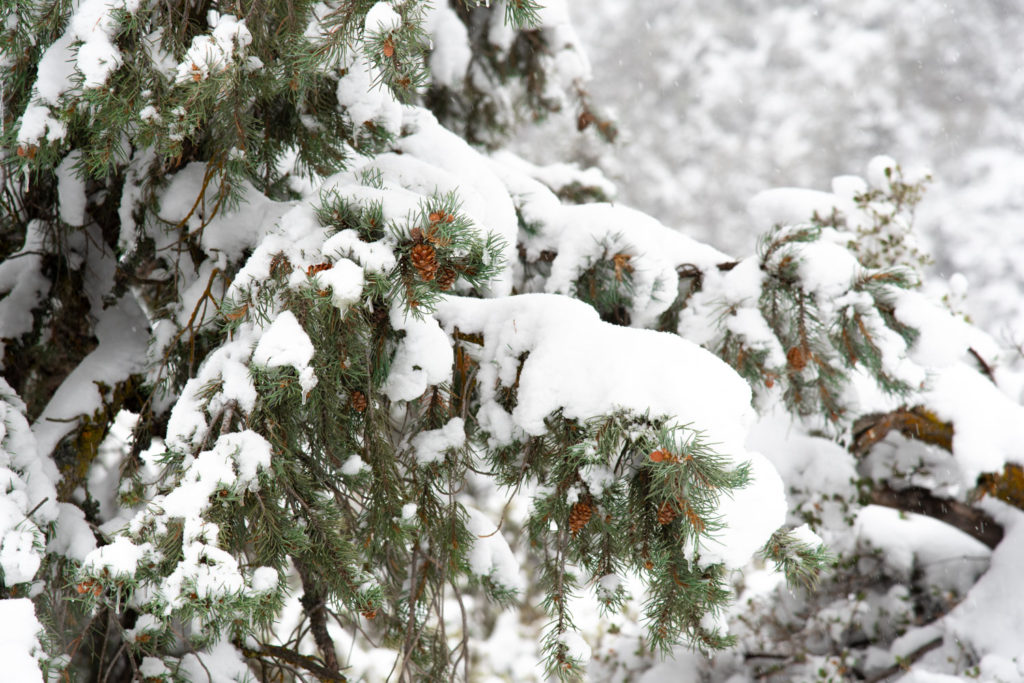
- There is an immense amount of sap or resin oozing from just about any part of the trunk or branches that you look at.
- The ground beneath the tree is typically covered in both old and fresh cones that have opened and are devoid of seeds.
The seed cones of this species are small compared to other native pines in our region such as sugar, Coulter, and gray pines, measuring only three to five inches in length. They’re green and covered in resin during the summer before turning brown and opening up in the early fall.
Distribution
While often found as part of a low woodland in association with various juniper species, singleleaf pinyon pines may grow as the dominant species in some forested areas or alongside other conifers such as Jeffrey pine and white fir in mixed-conifer forests. Interestingly, pinyon-juniper forests are the most extensive drought-tolerant conifer forests on Earth.

In California, the singleleaf pinyon pine is found between 3,000 and 9,500′ primarily on the eastern side of the Sierra Nevada as well as in the southern portion of the range. There are also large populations in the San Bernardino Mountains, particularly on the eastern side near the desert.
Of course, there are also large expanses of singleleaf pinyon pine forests in the Los Padres around Pine Mountain, Mt. Pinos, the San Emigdio Mountains, and throughout the upper Cuyama River watershed. These areas are often dominated by pinyon pine, with some western juniper and Jeffrey pine. Singleleaf pinyon pine stands often intermix with dry chaparral, too. These arid places with both dense and sparse stands of pinyon pines are unique compared to the majority of the Los Padres National Forest.

To see these interesting trees in the Los Padres, simply take a drive along State Route 33 from Ojai to Ventucopa. You will notice singleleaf pinyon pines lining the highway and adjacent slopes north of Cherry Creek.
You can also travel along Lockwood Valley Road to see large stands of pinyon pines growing in and around the Cuyama Badlands. Tecuya Ridge in the San Emigdio Mountains and the area around Pine Mountain Club are also excellent areas to experience singleleaf pinyon pines.
Importance of Pinyon Pine Nuts
Unlike most other pines, pinyon pine seeds are large and wingless. They have a thin shell that’s easy for many wildlife species—and humans—to break in order to get to the tasty seed (which we usually call a pine nut despite not being an actual nut).
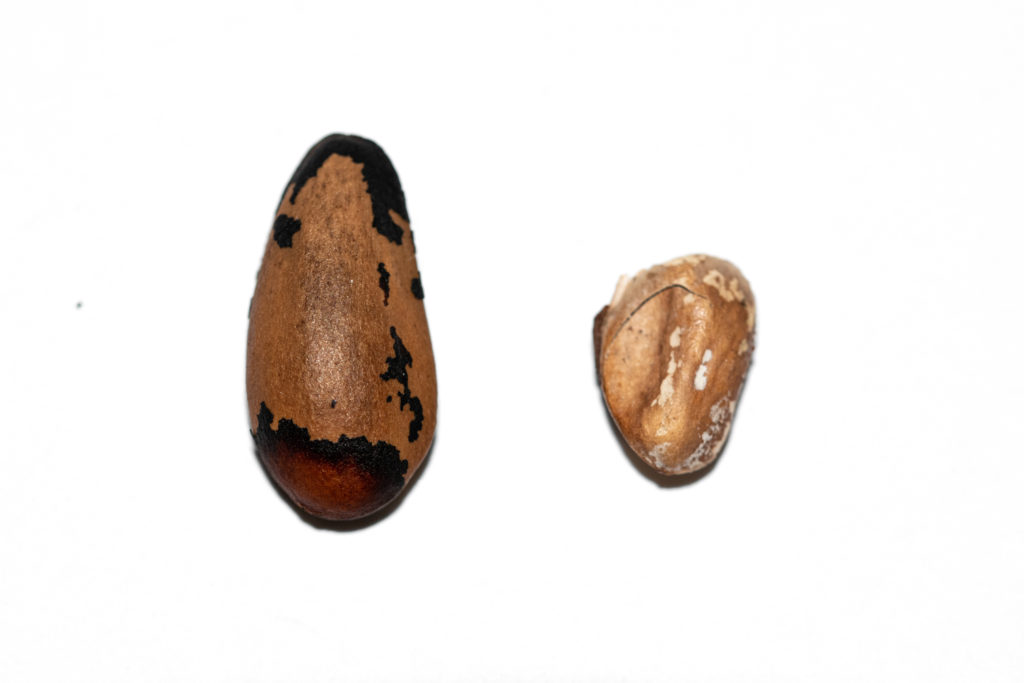
Birds such as Clark’s nutcracker, Stellar’s jays, and even scrub jays eat these seeds. In fact, such birds are largely responsible for the expansion of the singleleaf pinyon pine’s range due to their tendency to bury pine nuts as a winter food source. Many seeds are forgotten or simply have enough time to germinate. Chipmunks, squirrels, and mice also rely on this important food source. And even larger animals such as deer, bears and bighorn sheep enjoy the pinyon pine nuts.
Humans, too, have had a long history with the singleleaf pinyon pine. Numerous Native American tribes relied heavily on pinyon pine nuts as a food source. The Chumash historically traveled from the coast to the Mt. Pinos area to collect pinyon pine nuts. Jan Timbrook’s Chumash Ethnobotany details the fascinating pinyon pine nut collection process and the importance of this species as both a wood and sap source to local Native Americans.
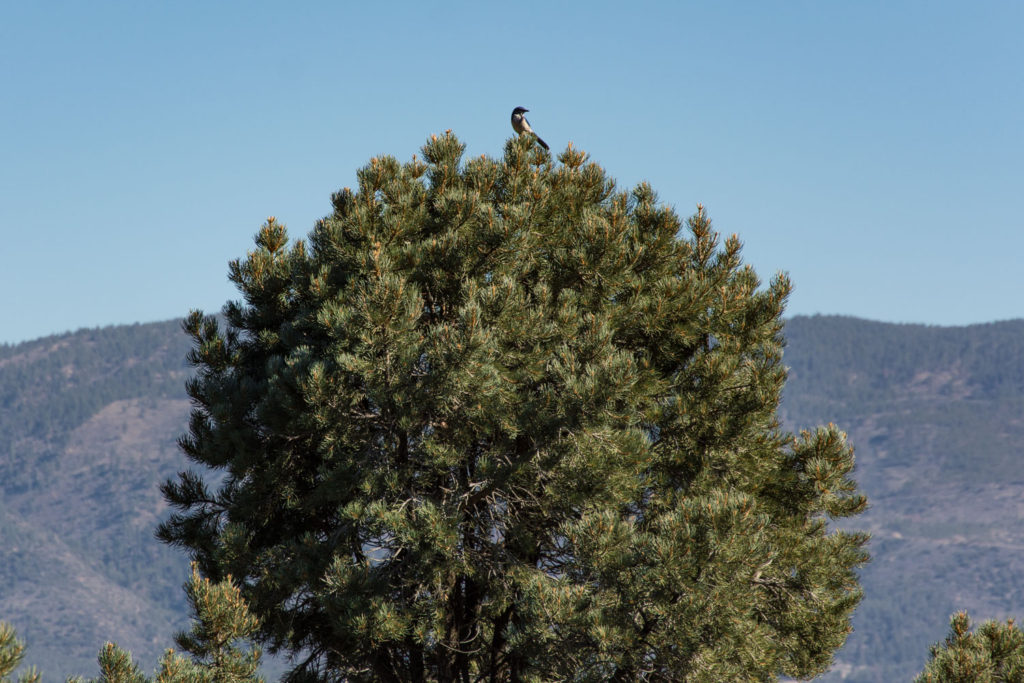
Threats
As Europeans and Americans colonized the West, singleleaf and other pinyon pines were cut en masse to be used as fuelwood and as charcoal for mining and smelting operations. Later, ranchers advocated for the removal of vast stretches of pinyon forests to open up land for grazing. Over the last two centuries, a substantial portion of pinyon-juniper forests has been cut down for one reason or another. Even today, there are still projects occurring in the Great Basin and elsewhere that aim to bulldoze pinyon pines to be replaced with usually invasive grasses for grazing.
In California and in the Los Padres National Forest specifically, singleleaf pinyon pines are primarily threatened by large projects justified as “fuel reduction.” These type of projects often target what are naturally dense stands of pinyon pines.
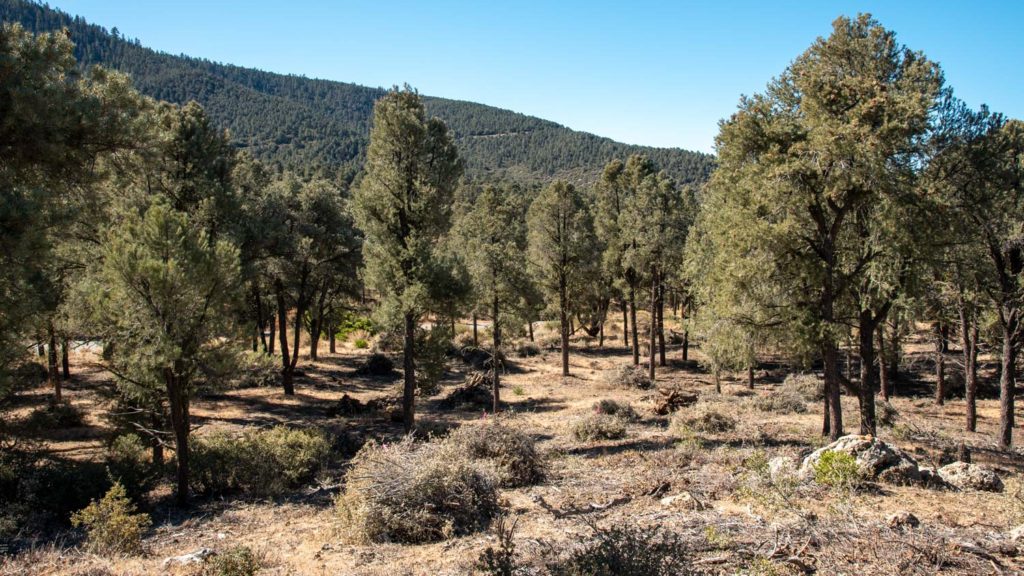
Historically, such forests had long fire rotations that were measured in centuries. Similar to chaparral, long fire-free intervals were important for this slow-growing species and allowed enough time for stands to become dense. When fires do occur in pinyon pine forests, they are typically high intensity. John Leiberg, who conducted surveys of western forests around the turn of the twentieth century, said this about pinyon pines in Southern California in a 1900 report:
This forest forms an open or dense growth. At low elevations, 3,500 to 4,500 feet, it is sparse or scattered, 4 to 40 per acre. Above 4,500 feet and below 6,5000 feet the stands are moderately heavy in a relative sense, varying from 100 to 400 trees per acre. Above the last-named elevation occurs the densest growth, when 500 to 1,000 trees to the acre…
Despite the dense nature of pinyon pine forests, the Forest Service continues to propose projects to remove these trees. In 2018 and 2019, Los Padres National Forest officials approved two large projects near Mt. Pinos that would remove large numbers of singleleaf pinyon pines by either cutting or mastication followed by burning. The agency approved these projects covering 4.5 square miles without preparing an environmental assessment. ForestWatch and our partners at the Center for Biological Diversity, John Muir Project, and Mountain Communities for Fire Safety filed lawsuits in order to protect these areas. The cases are ongoing.
